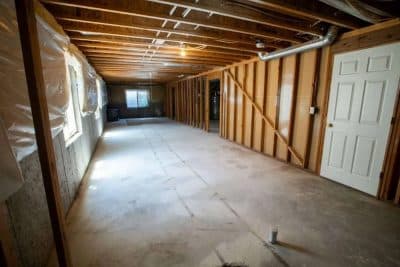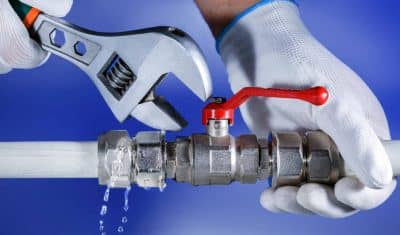
When winter temperatures plummet, frozen pipes can become a costly and disruptive issue for homeowners and businesses alike. Not only do they interrupt the water supply, but they can also burst, causing extensive water damage. This damage can lead to costly repairs, potential health hazards from mold growth, and even temporary displacement from your home. Knowing how to prevent frozen pipes in the winter is essential to protecting your property. This guide offers practical, effective strategies to safeguard your plumbing when the mercury drops.
Why Pipes Freeze and the Risks Involved
As temperatures fall below 32°F (0°C), the water inside pipes can freeze, especially in areas that lack insulation or exposure to external cold. Water expands as it freezes, exerting pressure on the pipe walls, which can lead to cracks or complete ruptures. The aftermath can result in expensive repairs, water damage, and mold growth.
Frozen pipes are most commonly found in:
- Unheated basements or crawl spaces
- Exterior walls without sufficient insulation
- Attics or garages with little thermal protection
Understanding these risk factors is the first step toward proactive prevention.
Insulate Exposed Pipes
One of the most straightforward solutions is to insulate pipes that are vulnerable to freezing. Pipe insulation sleeves, foam tubing, and even heat tape are effective options. Pipe insulation sleeves are easy to install and provide a good level of protection, while foam tubing is more flexible and can be used on curved pipes. Heat tape, on the other hand, is a more advanced solution that provides continuous heat to the pipes. Focus on areas like basements, crawl spaces, garages, and under kitchen or bathroom sinks.
For an extra layer of security, consider using UL-listed heat cables on pipes that are most at risk. These cables have built-in thermostats that activate when temperatures fall to dangerous levels.
Don’t forget to inspect your insulation annually. Over time, it may degrade or detach from the pipe, reducing its effectiveness. Replace or resecure any damaged or missing insulation before the cold season arrives.
Seal Air Leaks
Drafts and cold air leaks can drop the ambient temperature around your pipes. Use caulk or spray foam to seal cracks and holes around windows, doors, and the points where pipes enter walls or floors. Pay close attention to areas where electrical or plumbing lines pass through the building envelope.
Sealing gaps not only helps protect pipes from freezing but also improves your home’s overall energy efficiency.
Additionally, weatherstripping doors and attic hatches helps reduce cold air infiltration, particularly in older homes with less airtight construction. This step supports your overall winterization strategy.
Keep Thermostat Consistent
Avoid setting your thermostat too low during the night or while away from home. It may save on heating bills in the short term, but it dramatically increases the chance of frozen pipes. Experts recommend maintaining a consistent temperature of at least 55°F throughout your property, even in unoccupied areas.
If you leave for an extended period, don’t turn off the heat completely. Instead, program your thermostat to maintain a minimum safe temperature.
Consider investing in a smart thermostat. These devices can be monitored and controlled remotely, giving you added peace of mind when you’re away from home.
Let Faucets Drip Slightly
Letting a faucet drip during freezing weather can relieve pressure inside the plumbing system. If a pipe does freeze, the reduced pressure from flowing water may prevent it from bursting.
This tactic is particularly effective for pipes running along exterior walls. It doesn’t require much water—just a slow, steady drip from both the hot and cold taps is usually sufficient.
Also, prioritize the fixture farthest from your main water supply line. Doing so encourages water movement throughout the entire system.
Open Cabinet Doors
On freezing nights, open cabinet doors in your kitchen and bathroom to allow warm indoor air to circulate the pipes. This simple step can make a meaningful difference, especially if plumbing is installed against exterior walls.
If you have young children or pets, remember to remove any hazardous cleaners or chemicals before leaving cabinets open.
In icy regions, adding a small space heater (placed safely) near vulnerable pipes inside cabinets can further mitigate freezing risk.
Drain Outdoor Water Lines
Garden hoses, outdoor faucets, sprinkler systems, and pool lines are often overlooked sources of frozen pipe damage. Disconnect and store hoses before winter sets in, and shut off the water supply to outdoor faucets. Then, drain any residual water.
Many modern homes are equipped with frost-proof spigots, which are designed to prevent freezing by shutting off the water supply inside the house when the temperature drops. However, these still need to be appropriately drained to function as intended. To do this, simply turn off the water supply to the spigot from inside the house and let any remaining water drain out.
For added assurance, cover outdoor spigots with insulated faucet covers. These inexpensive devices provide extra protection against subzero temperatures.
Install a Smart Water Monitor
Innovative leak detection systems can alert you to unusual changes in water flow, allowing you to catch a freeze or leak early. Some devices can even shut off your main water supply automatically in case of a burst pipe.
While these systems won’t physically stop a pipe from freezing, they serve as an added layer of protection, especially in second homes or properties that remain vacant during the winter months.
Additionally, some smart water monitors provide usage reports and alerts when water usage deviates from standard patterns, allowing you to act before damage escalates.
Know Where Your Shut-Off Valve Is
In case a pipe does freeze and burst, knowing how to shut off the water supply quickly can minimize damage. Locate your home’s main water shut-off valve now—before you need it in an emergency. Make sure everyone in the household knows where it is and how to operate it. This knowledge gives you a sense of control in a potentially chaotic situation.
If your shut-off valve is hard to reach or outdated, consider upgrading to a more accessible or automatic version. This can save critical time during an emergency.
Work With a Professional HVAC and Plumbing Team
While there are plenty of DIY steps you can take to protect your plumbing, nothing beats a professional inspection. A qualified technician can identify hidden vulnerabilities and recommend tailored solutions. This is particularly valuable for older homes or properties with complicated plumbing networks. Working with a professional team provides reassurance that your home is in the best possible condition for the winter.
If you’re looking to protect pipes from freezing, working with an experienced contractor can help you assess weak points and plan preventive strategies that are right for your home.
An HVAC specialist can also evaluate how well your heating system maintains consistent temperatures throughout the home, helping to prevent localized cold spots that could affect plumbing. This holistic approach to winter preparation is key to long-term protection.
Final Thoughts: Be Proactive Before the Freeze
Preventing frozen pipes in the winter isn’t just about avoiding inconvenience—it’s about protecting your investment. A burst pipe can lead to thousands of dollars in damage, not to mention weeks of disruption.
By following these common-sense tips, you can significantly reduce your risk. From insulating pipes to installing smart monitors, each step contributes to a safer, more resilient home.
Preparation is key. Create a seasonal maintenance checklist and start early in the fall. The sooner you winterize, the better your chances of avoiding emergencies when temperatures plunge.
For more guidance on winter preparedness and expert plumbing strategies, consult with local professionals who understand the climate challenges in your area.








